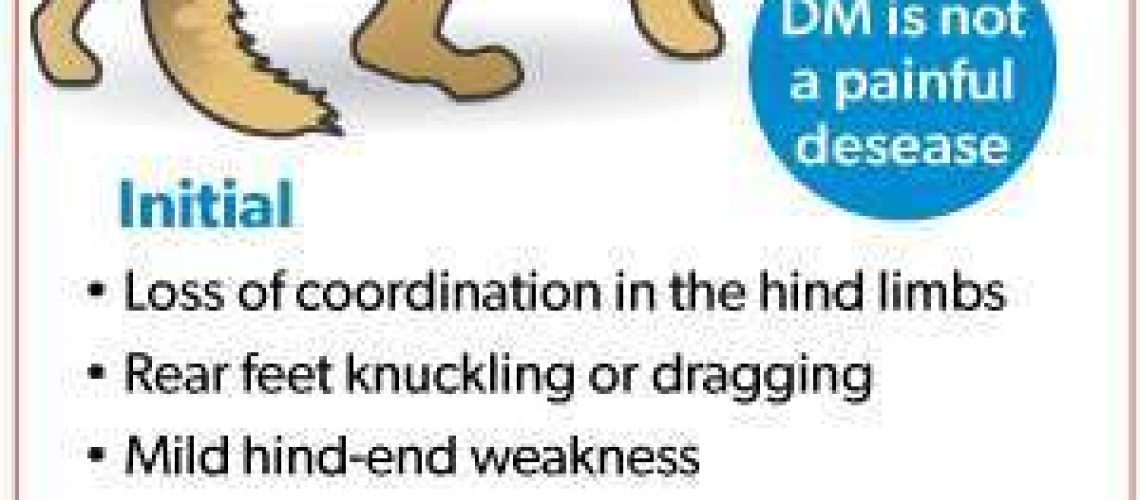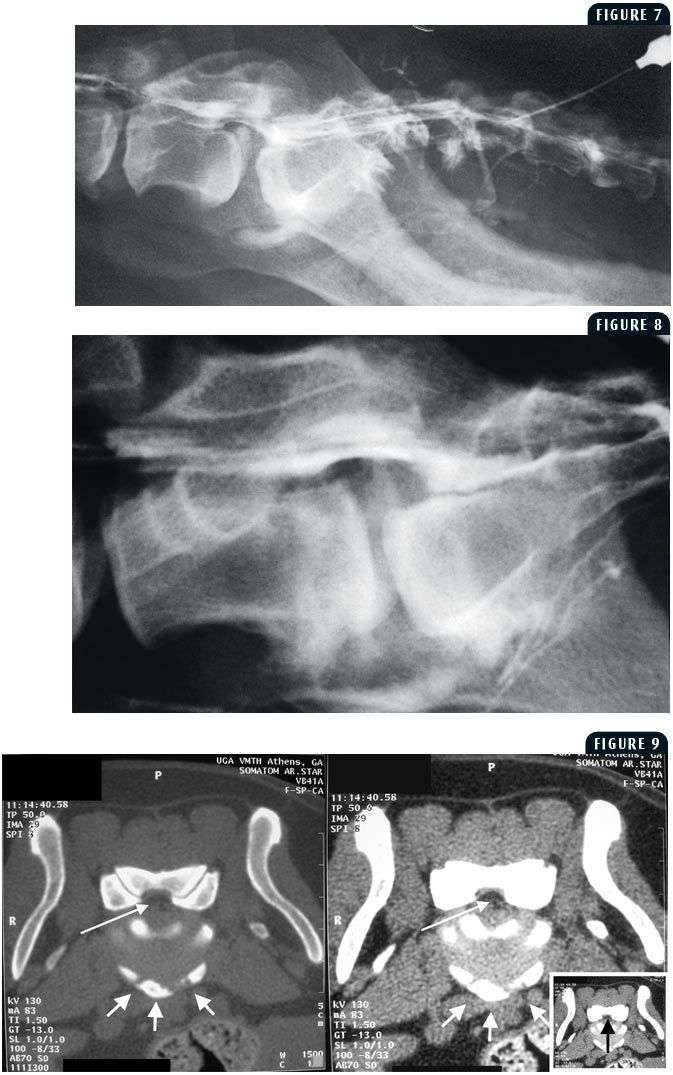Key Takeaways:
- Degenerative myelopathy is a progressive neurological disease that affects the spinal cord of dogs.
- It primarily occurs in older dogs, typically starting around 8-9 years of age.
- The exact cause of degenerative myelopathy is unknown, but it is believed to have a genetic component.
- Common symptoms include hind limb weakness, difficulty walking or standing, and muscle atrophy in the hindquarters.
- There is currently no cure for degenerative myelopathy, but supportive care and physical therapy can help manage the symptoms and improve quality of life for affected dogs.
Are you a dog lover? Do you want to ensure that your furry friend lives a long, healthy life by your side? Then understanding degenerative myelopathy in dogs is essential. This condition, which affects the spinal cord and nervous system, can gradually rob your beloved pet of their mobility and independence. By delving into this subject, you will gain valuable knowledge on how to identify the early signs, provide appropriate care, and potentially slow down the progression of this disease. With an estimated 1 in 20 dogs being affected by degenerative myelopathy, it's crucial to equip yourself with the right information to give your canine companion the best chance at a fulfilling life. So let's dive into the world of degenerative myelopathy and discover how we can help our four-legged friends thrive despite this challenge.
What is Degenerative Myelopathy in dogs?
Degenerative Myelopathy is a progressive neurological disease that affects the spinal cord of dogs. It is most commonly found in older dogs, usually around 8 years of age or older. The disease slowly damages the nerves in the spinal cord, leading to weakness and loss of coordination in the hind legs.
As Degenerative Myelopathy progresses, it can also affect other parts of the body, such as the muscles and bladder control. While the exact cause of this disease is unknown, it is believed to have a genetic component, especially in certain dog breeds.
Genetic Component
Degenerative Myelopathy has been found to have a strong genetic component, meaning that certain breeds are more prone to developing this condition. Some of the breeds that are commonly affected include German Shepherds, Boxers, Pembroke Welsh Corgis, and Chesapeake Bay Retrievers.
Research has shown that a specific gene mutation called SOD1 plays a role in the development of Degenerative Myelopathy. Dogs that carry two copies of this mutation are at a higher risk of developing the disease compared to those with only one copy or none at all.
Progression of the Disease
Degenerative Myelopathy typically starts with mild symptoms that gradually worsen over time. In its early stages, dogs may experience difficulty walking or dragging their hind legs while walking. As the disease progresses, they may lose muscle mass in their hindquarters and become unable to support themselves.
The progression of Degenerative Myelopathy varies from dog to dog but generally follows a similar pattern. Initially, there may be occasional stumbling or knuckling over of paws. As time goes on, these symptoms become more frequent and severe, eventually leading to complete paralysis of the hind legs.
Managing the Disease
While there is currently no cure for Degenerative Myelopathy, there are ways to manage the disease and improve the quality of life for affected dogs. Physical therapy exercises can help maintain muscle strength and mobility. Assistive devices such as harnesses or carts can also be used to support the dog's hind end and allow them to continue walking.
Dietary supplements, such as antioxidants and omega-3 fatty acids, may be beneficial in slowing down the progression of the disease. It is important for dog owners to work closely with their veterinarian to develop a customized treatment plan based on their dog's specific needs.
How does Degenerative Myelopathy affect a dog's body over time?
Understanding the Progression of Degenerative Myelopathy
Degenerative Myelopathy (DM) is a progressive disease that affects a dog's spinal cord, leading to hind limb weakness and paralysis. It typically starts with the degeneration of nerve fibers in the spinal cord, gradually spreading to other areas. As the disease progresses, it impairs the dog's ability to walk, causing them to drag their hind limbs or lose coordination.
The Role of Nerve Damage
The primary cause of DM is still unknown, but research suggests that it may involve genetic factors. The nerve damage disrupts communication between the brain and hind limbs, resulting in muscle weakness and loss of control. Over time, this can lead to complete paralysis in severe cases.
To better understand how DM affects a dog's body, imagine a highway where cars represent nerve signals. In a healthy dog, these signals flow smoothly from the brain to the hind limbs, allowing for coordinated movement. However, in dogs with DM, this highway becomes damaged and congested. As more nerve fibers degenerate, traffic jams occur, causing hind limb function to deteriorate.
Are certain breeds more prone to developing Degenerative Myelopathy?
Breeds Susceptible to Degenerative Myelopathy
While any breed can develop Degenerative Myelopathy (DM), certain breeds have been found to be more susceptible than others. Large breed dogs such as German Shepherds, Boxers, and Golden Retrievers are among those at higher risk. However, smaller breeds like Pembroke Welsh Corgis and Chesapeake Bay Retrievers can also be affected.
The Genetic Link
Research has identified a specific gene mutation associated with an increased risk of DM in certain breeds. This mutation affects the production of a protein necessary for maintaining the health of nerve cells. Dogs that inherit two copies of this mutated gene are more likely to develop DM. However, it's important to note that not all dogs with the mutation will develop the disease, as other factors may also play a role.
If you have a dog from a breed prone to DM, it doesn't mean they will definitely develop the disease. However, being aware of their genetic predisposition can help you monitor their health and take proactive measures if any symptoms arise.
What are the early signs and symptoms of Degenerative Myelopathy in dogs?
Recognizing Early Signs of Degenerative Myelopathy
Early detection plays a crucial role in managing Degenerative Myelopathy (DM) in dogs. Being able to recognize the early signs allows for timely intervention and improved quality of life for your furry friend.
Initial Symptoms
In the early stages, DM often presents itself as subtle changes in your dog's hind limb coordination. You may notice them stumbling occasionally or having difficulty getting up after lying down. They might drag their hind paws or show weakness when walking or running. These initial symptoms can be mistaken for normal aging or other conditions, so it's important to pay close attention.
As DM progresses, these symptoms worsen over time. The hind limbs become increasingly weak, leading to muscle atrophy and loss of control. It's essential to consult with a veterinarian if you observe any concerning changes in your dog's mobility.
Can Degenerative Myelopathy be cured or treated?
Managing Degenerative Myelopathy
Unfortunately, there is currently no cure for Degenerative Myelopathy (DM). Once diagnosed, the focus shifts towards managing the disease and improving your dog's quality of life.
Treatment Approaches
While DM itself cannot be reversed, various treatment approaches can help slow down its progression and alleviate symptoms. Physical therapy, including exercises to maintain muscle strength and range of motion, is often recommended. Assistive devices like harnesses or carts can provide support and enable mobility for dogs with severe hind limb weakness.
Additionally, certain medications and supplements may be prescribed to manage pain and inflammation associated with DM. However, it's important to note that these treatments aim to manage symptoms rather than cure the underlying disease.
As a dog owner, providing a comfortable environment with easy access to food, water, and rest areas is crucial. Regular veterinary check-ups are essential for monitoring the disease's progression and adjusting the treatment plan accordingly.
How can dog owners help manage the progression of Degenerative Myelopathy in their pets?
Supporting Dogs with Degenerative Myelopathy
As a loving dog owner, there are several ways you can help manage the progression of Degenerative Myelopathy (DM) in your pet and ensure their well-being.
Environmental Adaptations
Modifying your home environment to accommodate your dog's changing needs is essential. Providing non-slip surfaces such as rugs or mats can improve traction for their hind limbs. Ramps or steps can assist them in accessing elevated areas without straining themselves. Placing food and water bowls at an appropriate height reduces the need for excessive bending or stretching.
Regular exercise tailored to your dog's abilities helps maintain muscle tone and joint flexibility. Short walks on even surfaces or swimming sessions can be beneficial. However, it's crucial not to overexert them as fatigue can worsen symptoms.
Maintaining a healthy diet is also important for overall well-being. Consult with your veterinarian about specific dietary recommendations for dogs with DM.
By making these adjustments and providing a supportive and loving environment, you can enhance your dog's quality of life and ensure they remain comfortable throughout the progression of DM.
In conclusion, degenerative myelopathy is a progressive disease that affects the spinal cord of dogs, leading to weakness in their hind legs and difficulty walking. While there is no cure for this condition, early detection and supportive care can help improve the quality of life for affected dogs.
Is degenerative myelopathy painful in dogs?
It is crucial to understand that degenerative myelopathy does not cause pain for the dog itself, but it can be emotionally challenging for the owner to witness. If you have a dog with degenerative myelopathy, it is essential to prioritize their quality of life rather than the length of time they have left.
Can dogs recover from degenerative myelopathy?
Regrettably, there is currently no known cure for degenerative myelopathy. However, there are options for treatment. Intensive physical therapy and customized assistive devices, when fitted correctly, can prolong a dog's lifespan by up to three years, compared to just six months to a year for dogs who do not undergo therapy.
At what point do you euthanize a dog with degenerative myelopathy?
In many cases, dogs are mercifully put to sleep within six to twelve months after the first signs of the disease appear, as it causes a significant loss of mobility. If not euthanized, degenerative myelopathy (DM) can continue for over three years and result in an inability to walk or breathe properly.
What is the life expectancy of a dog with DM?
The lifespan of dogs with Degenerative Myelopathy typically ranges from six months to three years. Dogs with DM can improve their quality of life through rehabilitation therapy and regular exercise. Unfortunately, there is currently no cure for Degenerative Myelopathy.
Should you walk a dog with degenerative myelopathy?
Degenerative myelopathy in dogs does not have a cure. However, managing the symptoms as they worsen can help ensure a dog diagnosed with this condition maintains a good quality of life. Engaging in exercise, such as walking, swimming, and physical therapy, is important in prolonging the dog's quality of life.
Do dogs with DM have trouble eating?
In the final stage of the disease, known as Stage 4 - LMN tetraplegia and brain stem signs, which typically lasts over 36 months, the degeneration can spread to the neck, brain stem, and brain. This results in the inability to move all four limbs, difficulty breathing, and challenges with swallowing and moving the tongue.

















